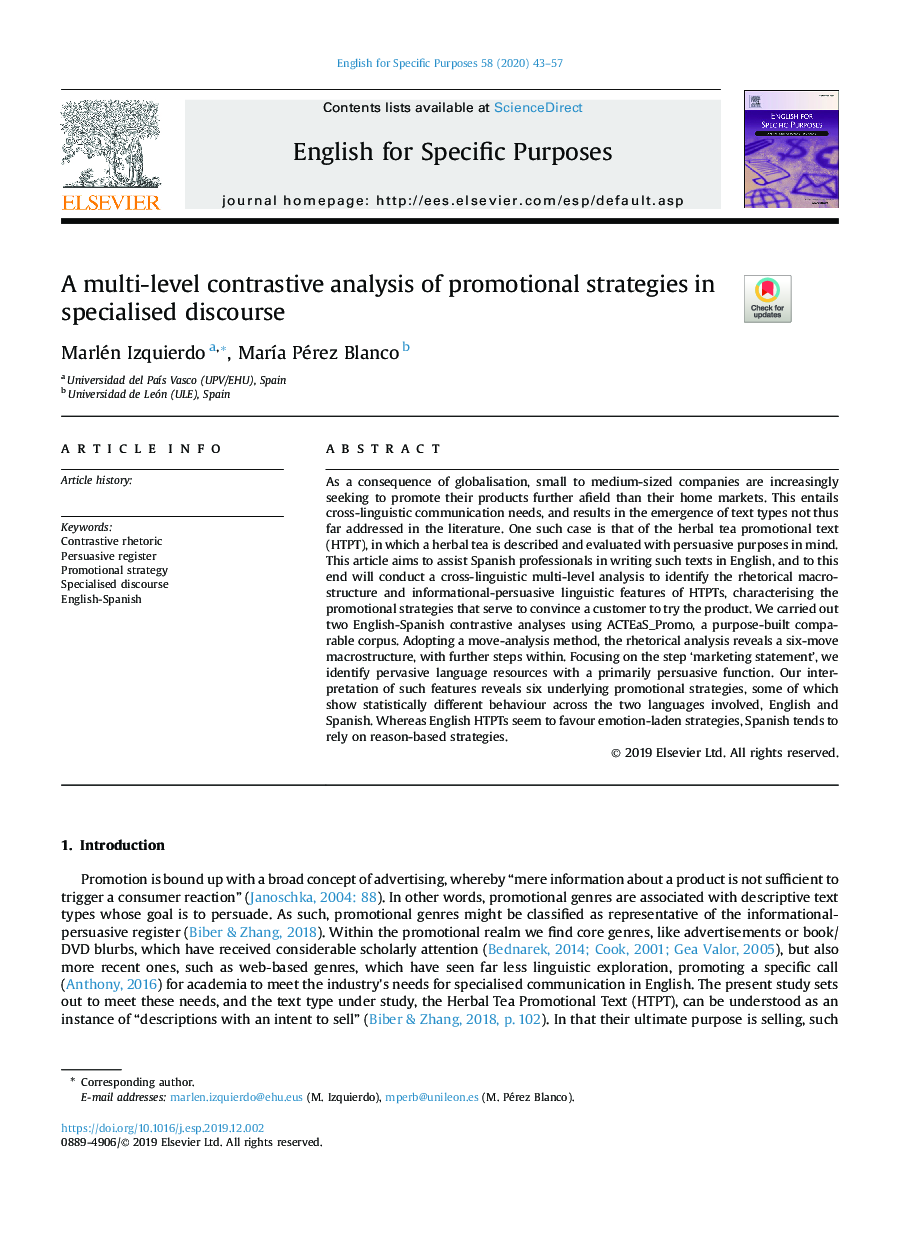| Article ID | Journal | Published Year | Pages | File Type |
|---|---|---|---|---|
| 13427398 | English for Specific Purposes | 2020 | 15 Pages |
Abstract
As a consequence of globalisation, small to medium-sized companies are increasingly seeking to promote their products further afield than their home markets. This entails cross-linguistic communication needs, and results in the emergence of text types not thus far addressed in the literature. One such case is that of the herbal tea promotional text (HTPT), in which a herbal tea is described and evaluated with persuasive purposes in mind. This article aims to assist Spanish professionals in writing such texts in English, and to this end will conduct a cross-linguistic multi-level analysis to identify the rhetorical macrostructure and informational-persuasive linguistic features of HTPTs, characterising the promotional strategies that serve to convince a customer to try the product. We carried out two English-Spanish contrastive analyses using ACTEaS_Promo, a purpose-built comparable corpus. Adopting a move-analysis method, the rhetorical analysis reveals a six-move macrostructure, with further steps within. Focusing on the step 'marketing statement', we identify pervasive language resources with a primarily persuasive function. Our interpretation of such features reveals six underlying promotional strategies, some of which show statistically different behaviour across the two languages involved, English and Spanish. Whereas English HTPTs seem to favour emotion-laden strategies, Spanish tends to rely on reason-based strategies.
Keywords
Related Topics
Social Sciences and Humanities
Arts and Humanities
Language and Linguistics
Authors
Marlén Izquierdo, MarÃa Pérez Blanco,
